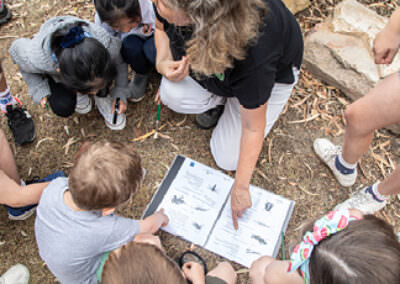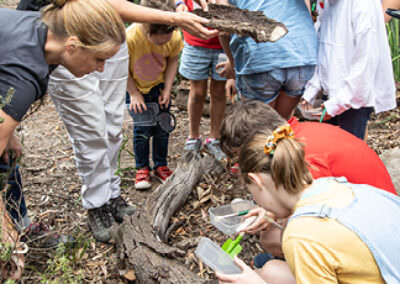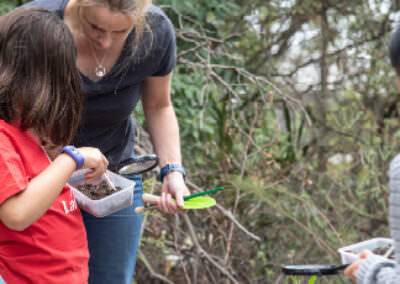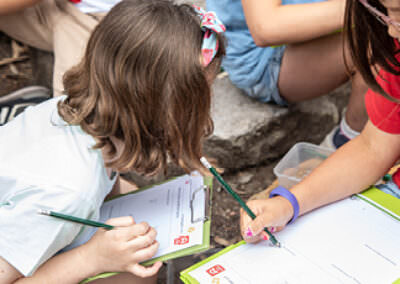
What’s happening in the habitat?
Time Allocation: 30 - 40 minutes*
Activity Level: Easy
Introduction
To increase your chances of observing animals carefully consider the suitability of the observation site and the current conditions. Consideration for animal observations:
- an area that has varied surfaces (sand, dirt, rocks, water bodies) and vegetation (grasses, high and low plants, shrubs, trees)
- rain, snow or wind may send some animals into hiding
- the time of day will determine the types of animals observed, e.g. nocturnal, crepuscular species may be sleeping or inactive during the day
- listen while you go searching, some animals make calls and will alert you to their location
*Time allocation will be dependent on site selection and travel time.
Checklist
Instructions
 Step 1
Step 1
Predict which animals you might expect to see at your observation site, and which ones you might not expect to see?
Predict where in the habitat you might expect to see animals? Discuss locations in the habitat: in the air, on plants, in trees, under rocks, in the soil. Animals can be observed at different heights.
 Step 2
Step 2
Examine your chosen field guide with the children (device or printed version) prior to exploring outside. Point out an animal they are likely to observe and model how to use the field guide.
Safety steps:
- outline safety aspects to the children, when observing animals
- be gentle and quiet observers. Do not touch any insects
- instruct how to use tweezers, paintbrushes, tongs and garden trowels
Guide the children to tread lightly, taking care not to stand on anything living while exploring. Ask the children to return things back to how they found them, e.g. turned rocks or logs.
 Step 3
Step 3
Head outside to your observation site for a minimum of 7 minutes. We can find animals or traces of animals everywhere we go. Allow children time for purposeful observations, exploring the site, carefully looking at different locations and using their senses to lead them.
- Start by looking at the ground, get down low and guide the children to tread lightly. Use the trowels to gently move the soil, leaves and bark and magnifying glasses to examine small creatures up close. Remind the children to return things back to how they found them, e.g. turned rocks or logs.
- Stand up and see what you can find, taking care not to stand on anything living while exploring animals at eye height. Examine the leaves on bushes, flowers and bark on tree trunks.
- Look up high now, into the tall trees and the sky above. You might like to use binoculars to get a closer look at what is living above.
 Step 4
Step 4
Use the activity sheet to encourage the children to make careful observations and thoughtful observations.
You might like to take photos instead to capture your observations.
Extension Activity
How might we know an animal is living in a habitat without seeing them? What traces might they leave behind?